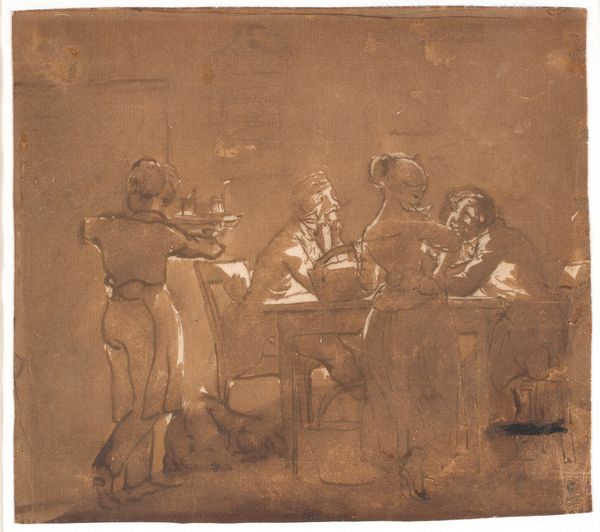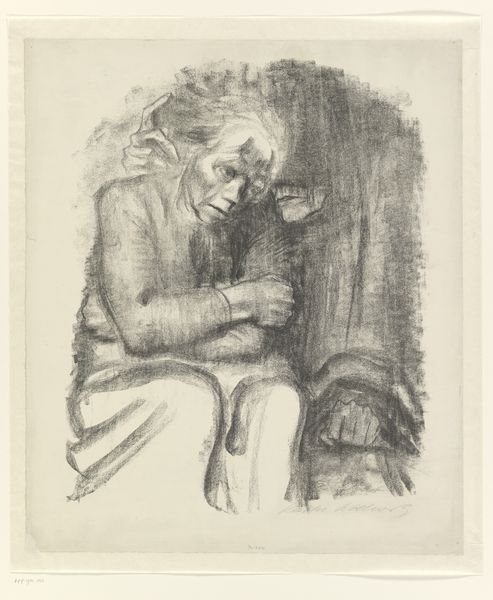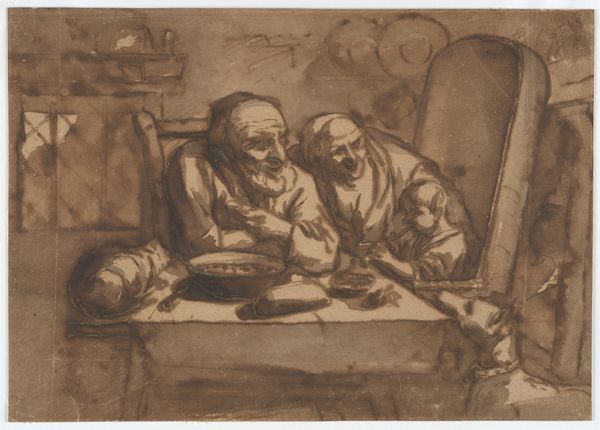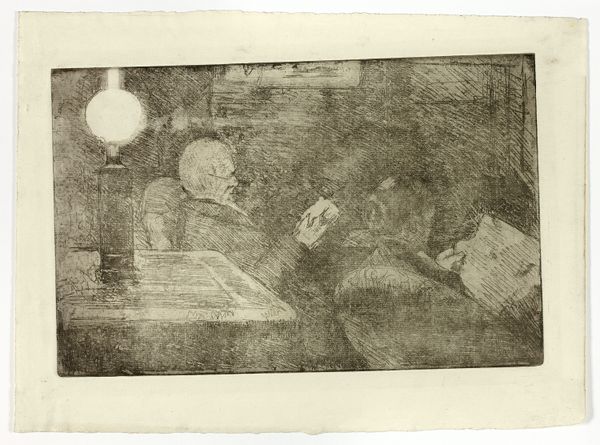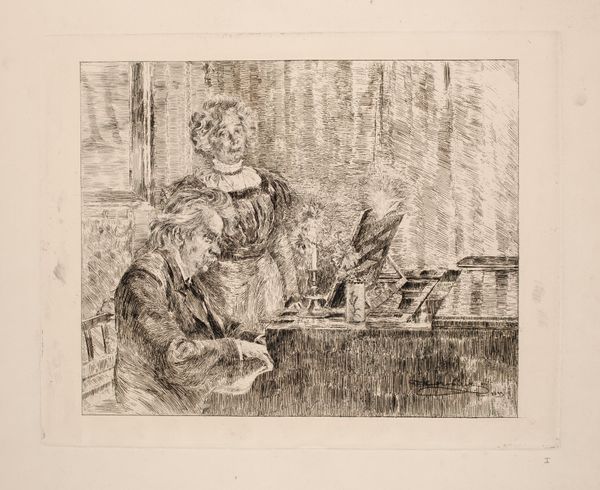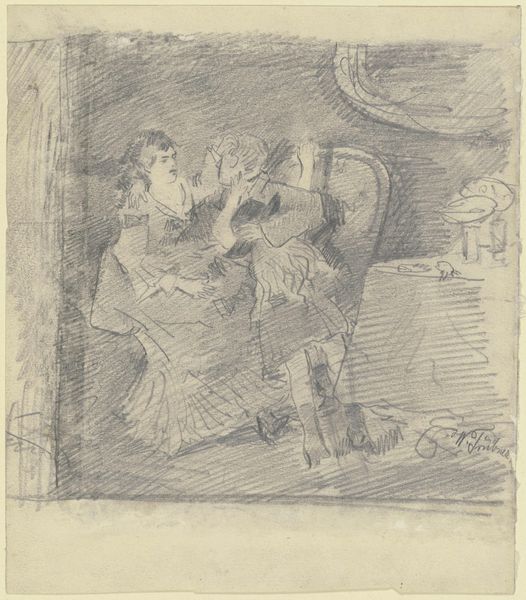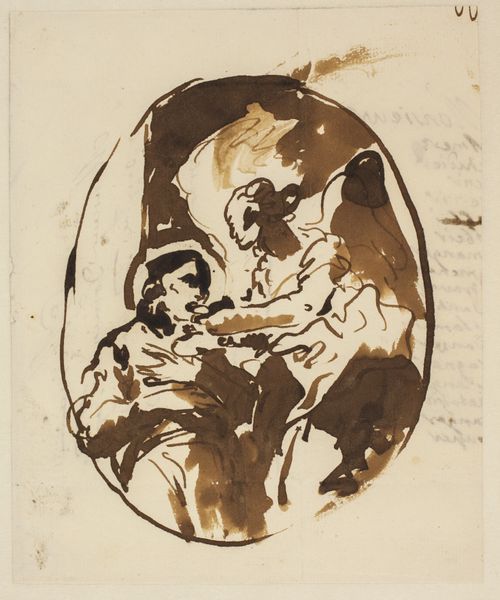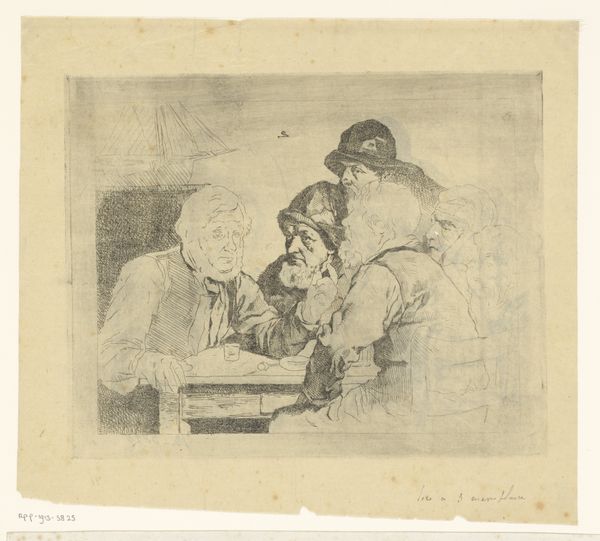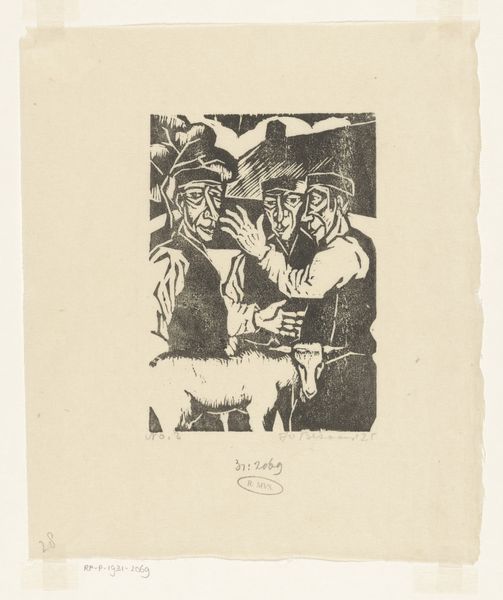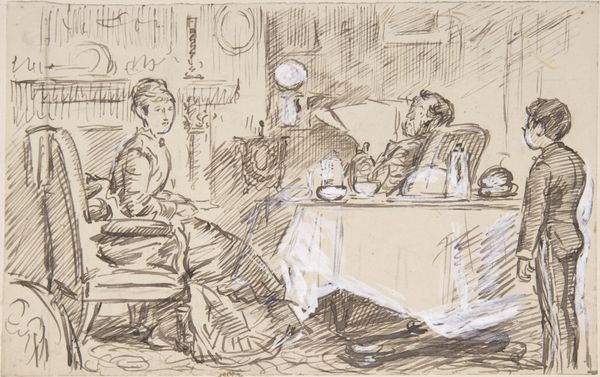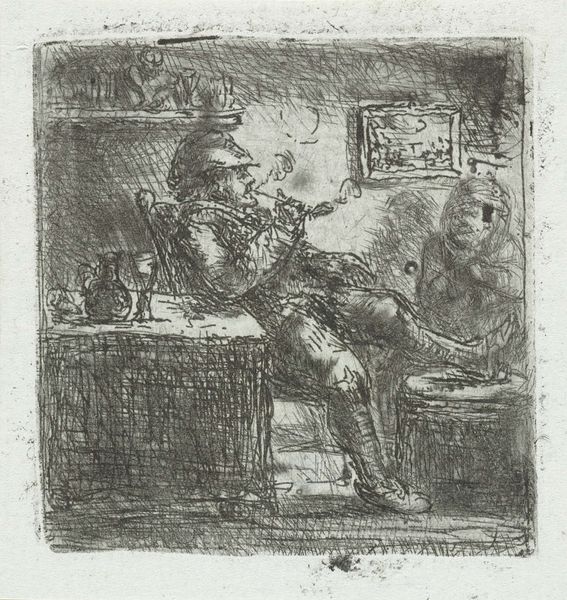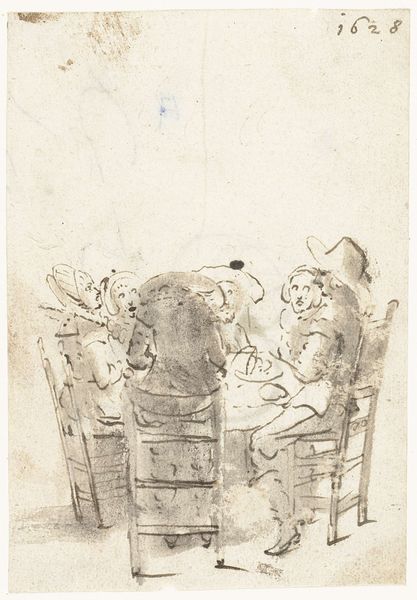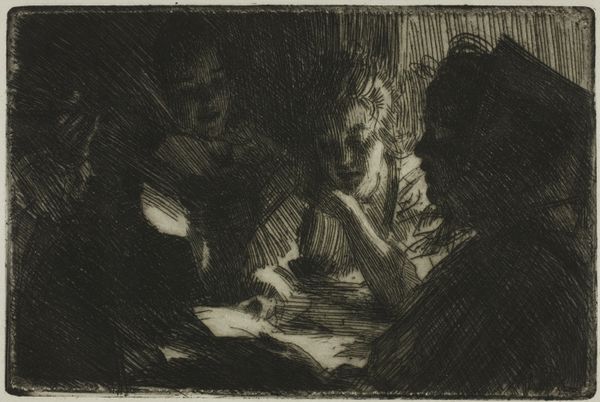
drawing, monotype, intaglio, paper, ink
#
drawing
#
monotype
#
allegory
#
narrative-art
#
baroque
#
ink painting
#
intaglio
#
paper
#
ink
#
genre-painting
#
watercolor
Dimensions: overall: 17.1 x 16.5 cm (6 3/4 x 6 1/2 in.)
Copyright: National Gallery of Art: CC0 1.0
Editor: Here we have Nicolaes Maes' "Death and the Miser," created sometime between 1650 and 1655, using ink, watercolor, and other mediums on paper. The stark contrast and the looming skeleton definitely set a somber mood. What do you see in this piece, especially considering its historical context? Curator: It's tempting to view this as a straightforward memento mori, a vanitas reminding us of the fleeting nature of life, but let’s delve deeper into the socio-political implications. This was a time of burgeoning capitalism, a growing disparity of wealth and extreme religious interpretations, even Calvinist doctrine. Is the miser's obsession with wealth simply a personal failing, or is Maes critiquing a society that incentivizes such behavior, making death a fitting rebuke? How complicit is religion at the time to enabling social stratification? Editor: That's interesting. I was just focused on the individual's morality. I didn't think about how societal pressures may have played a part. So you’re saying Maes might be questioning the whole economic and religious system? Curator: Precisely! Think about the composition itself. Death isn’t passively waiting; it’s actively intervening. Is this a challenge to the emerging capitalist ideals? Consider, too, the intended audience. Who would have been viewing these images, and what dialogues might they have sparked? Could this also be viewed from today's lenses, to critique power structures or forms of inequality and exploitation that still persist? Editor: I never thought about art from that time as commenting on economics! So, understanding this work requires considering broader social justice issues, like wealth inequality, then and now. Thanks, I’ve definitely gained a new perspective. Curator: Indeed. Art offers endless opportunity to interrogate cultural values and injustices. I wonder how this narrative would play out differently were we to consider how intersecting aspects of identity impact resource and power access.
Comments
No comments
Be the first to comment and join the conversation on the ultimate creative platform.
